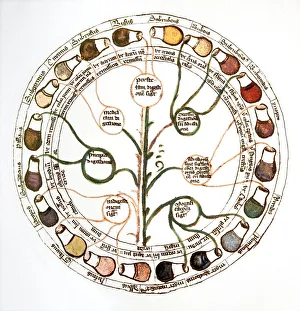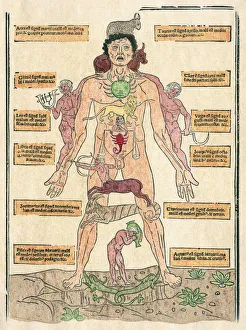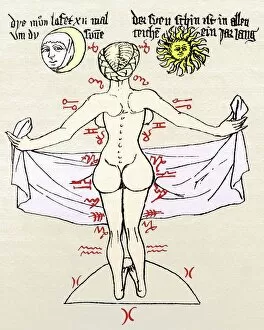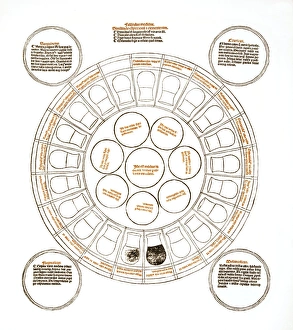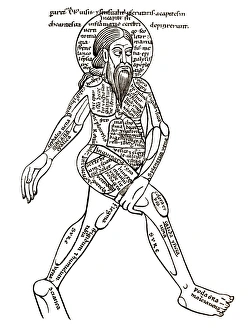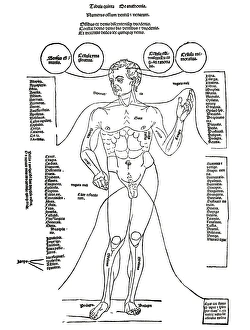Fasciculus Medicinae Collection
"Fasciculus Medicinae: Exploring Medieval Medical Practices through Woodcuts" Step back in time with the "Fasciculus Medicinae
All Professionally Made to Order for Quick Shipping
"Fasciculus Medicinae: Exploring Medieval Medical Practices through Woodcuts" Step back in time with the "Fasciculus Medicinae, " a captivating collection of woodcut illustrations from the 15th century. This medieval medical compendium offers a glimpse into the fascinating world of healthcare during that era. One intriguing image is the "Medieval Urine Wheel, " which reveals how physicians used urine color and consistency to diagnose various ailments. Another woodcut, known as "The Zodiac Man, " showcases the ancient belief in astrological influences on health, depicting bloodletting sites corresponding to different zodiac signs. "The Treatment Of The Plague" woodcut depicts a physician visiting a plague patient, holding a sponge soaked with vinegar and spices to his nose while attendants fumigate with torches. This highlights the desperate measures taken to combat this devastating disease. In another illustration, we witness a lesson in dissection, attributed to Gentile Bellini. It provides insight into early anatomical studies and their role in advancing medical knowledge during that time. "Petrus de Montagnana in the Lecture Chair at Padua" captures an important moment in medical education history. This woodcut showcases renowned lecturer Petrus de Montagnana imparting wisdom upon eager students at one of Europe's most prestigious universities. Throughout these captivating images, we can see how medicine intertwined with astrology and religion during this period. Manuscript illuminations add further beauty and depth to Johannes de Ketham's work.

